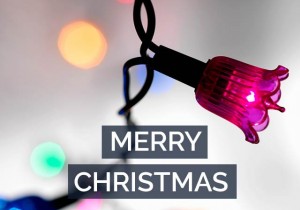Who doesn’t love Christmas lights?
Christmas is approaching, so it’s time to dig out our Christmas decorations and make our workplaces festive. However, it’s important to make sure that the Christmas decorations we are using, particularly Christmas lights, are safe. As an employer you can allow your employees to make the workplace festive, but exactly how safe are your lights?
The best way to ensure the safety of electrical decorations is to carry out a PAT Test.
There is not a definite legal requirement to carry out PAT tests, but the duty holder must ensure the safety of all the persons using their premises. It is advisable that the frequency with which PAT tests are performed is reflective of the number of people using the electrical appliance and the type of premises within which the equipment is located.
It is good to keep in mind that the main voltage of these Christmas lights comes from the socket supply, meaning that these lights actually have a 240V circuit. However; the series of bulbs reduce the resistance and as a result the voltage of each bulb is relatively low. Nevertheless, Christmas lights still pose a danger as the cable voltage remains at 240V.
So once you have found your Christmas lights from the previous years, always start with a visual inspection, which is the most important part of the check. Make sure there are no cuts, fraying, soft spots or lumps along the flex and that all the bulbs are unbroken and undamaged. If you find everything in good condition you do not have to do a PAT test immediately.
Should you find an issue with your lights and you find that you need to perform a PAT tests, first check your lights for their electrical appliance class symbol. Once you have determined which class your lights fall into, for example Class I, Class II or Class III*, you should then carry out the PAT test as you would with any other appliance. Furthermore, if you are using extension cables for your lights, you may need to carry out a leads test.
As well as PAT testing it is advisable to observe the following safety precautions when using Christmas lights:
• If the lights are designed for internal use never put them outside
• Do not let anybody play with the lights
• When you leave always switch off the lights
• Overloaded plugs often lead to fires; always use an adapter if you want to put more than one plug into a socket.
If you are planning to buy new festive lights we highly recommended Class III LED lights. They are usually in a higher price range than the old style cheaper ones, but they have a little transformer inside providing a low voltage to the cables.
Be safe and enjoy the festive period in peace!
If you would like to learn about how to carry out PAT testing take a look at the “Essential Guide PAT Testing DVD”. It is a full course about PAT testing and it also includes online exam and a certificate. This is the cheapest, quickest and easiest way to become a qualified PAT Tester!
If you have any further question or you need any assistance, please call our expert team on 01642 987 976, or visit our website to browse our full range of PAT testers.
*Classes of portable equipment refer to the electrical protection the appliance offers, there is a symbol on each device which indicates its electrical classification.
Class I device has a basic protection round the appliance and insulation around the flex. They also have a protective earthing conductor in case the appliance becomes electrically unsafe.
Class II equipment has a double insulation, a basic insulation round the appliance and round the flex and a supplementary layer of insulation around the metal parts.
Class III has two layers of protection, separated extra low voltage and an isolated transformer.


